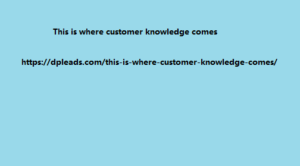In the digital age, email remains a cornerstone of professional communication. Whether you’re corresponding with colleagues, clients, or partners, the way you sign off can leave a lasting impression. A well-crafted email closing not only conveys professionalism but also enhances clarity and goodwill. This comprehensive guide explores the art of email sign-offs, providing insights, examples, and best practices to help you navigate this crucial aspect of business etiquette.
How sign-offs contribute to tone and intent
Effective email communication extends beyond the body of your message. The sign-off serves as the final note, influencing how your recipient perceives your This is where customer knowledge comes message and your professionalism. In this section, we delve into:
Understanding these dynamics sets the stage for mastering the art of email sign-offs
Elements of a Well-Crafted Email Sign-Off
Crafting a compelling sign-off involves more facebook by email address than just typing “Regards” or “Best.” This section explores the key elements that make up a memorable and effective email closing, including:
– Personalization and context sensitivity
– Tailoring sign-offs based on recipient and relationship
– Length and appropriateness in different settings
– Incorporating branding and professionalism
Examples and case studies illustrate how different approaches can enhance communication and leave a positive impression.
Best Practices for Different Email Scenarios
Not all emails are created equal, and neither should their sign-offs be. This section provides actionable advice for tailoring your sign-offs to various professional scenarios, such as:
– Formal correspondence with clients or senior executives
– Informal exchanges with colleagues or acquaintances
– Follow-ups and thank-you emails
– Crisis management and sensitive communications
Each scenario is dissected to highlight the nuances that influence your choice of sign-off.
## Section 4: Common Mistakes to Avoid
Even the most well-intentioned professionals can stumble when it comes to email sign-offs. This section identifies common pitfalls and offers guidance on how to avoid them, including:
– Overused and clichéd sign-offs
– Inappropriate casualness or formality
– Ambiguity and mixed signals
– Language and cultural insensitivity
Recognizing these mistakes can help you refine your approach and communicate more effectively through email.
## Section 5: Tools and Resources for Optimizing Email Sign-Offs
In the digital era, tools and resources can streamline and enhance your email communication. This section introduces:
– Email signature generators and customization tools
– Templates for different professional contexts
– AI-powered tools for analyzing email tone and effectiveness
By leveraging these resources, you can elevate your email sign-offs and improve overall communication efficiency.
## Section 6: The Future of Email Sign-Offs
As technology evolves, so too will the conventions of email communication. This final section explores emerging trends and future considerations for email sign-offs, including:
– Integration with AI and natural language processing
– Evolving cultural norms and global communication trends
– The impact of remote work and digital collaboration tools
Looking ahead ensures that your email sign-offs remain relevant and impactful in an ever-changing professional landscape.
